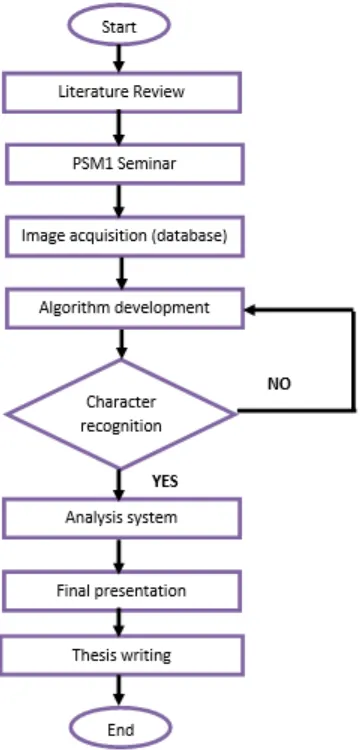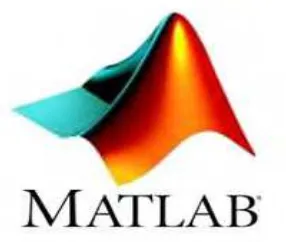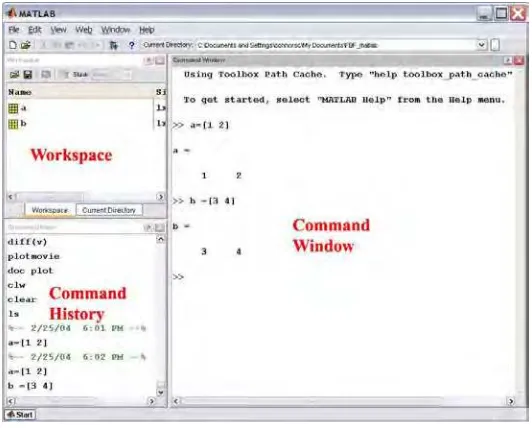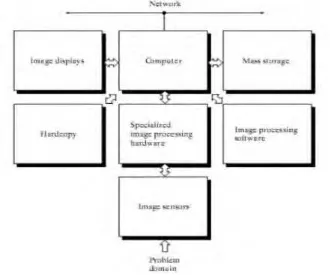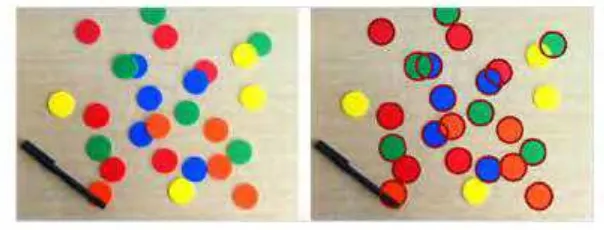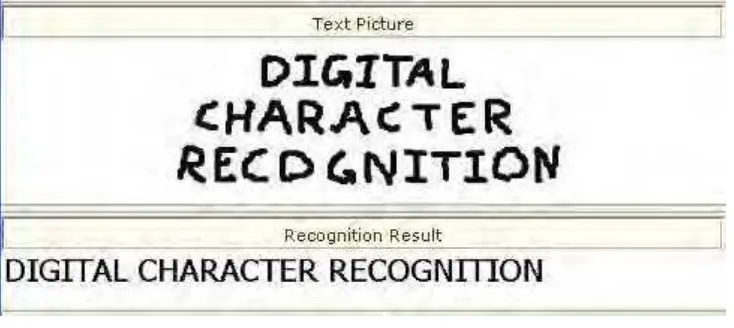CHARACTER RECOGNITION USING NEURAL NETWORK
SYAHFINASH BINTI SHAFII
This Report Is Submitted In Partial Fulfillment Of Requirement For The Bachelor Degree of Electonic Engineering (Computer Engineering)
Fakulti Kejuruteraan Elektronik dan Kejuruteraan Komputer
Universiti Teknikal Malaysia Melaka
v
ACKNOWLEDGEMENT
I would like to express my greatest gratitude to ALLAH S.W.T for the mercy, blessing and strength given for me to complete this thesis. With HIS blessing and bestowed, I have able to complete this thesis.
My special thanks goes to my dedicated supervisor, En. Rosman bin Abd Rahim, who always provides good supervision, encouragement and critics. I am truly indebt with all the helps that he has done for me in completing this final project from the beginning until the end of this thesis.
My thanks also go to my family for their support and endless encouragement throughout my life. They have been a wonderful source of support, inspiration, and encouragement throughout my education, and they deserve much credit for where I am today.
vi
ABSTRACT
vii
ABSTRAK
viii
TABLE OF CONTENTS
CHAPTER CONTENT PAGE
PROJECT TITLE i
REPORT VERIFICATION STATUS FORM ii
DECLARATION iii
SUPERVISOR'S DECLARATION iv
ACKNOWLEDGEMENT v
ABSTRACT vi
ABSTRAK vii
TABLE OF CONTENT viii
LIST OF TABLES xi
LIST OF FIGURES xii
LIST OF ABBREVIATIONS xiv
1 INTRODUCTION 1.1 Project Background 1
1.2 Problem Statement 1
1.3 Objectives 2
1.4 Scope and Limitation 2
ix
1.6 Report Structure 4
2 LITERATURE REVIEW 2.1 MATLAB 6
2.2 Image Processing 7
2.2.1 Image processing in MATLAB 9
2.3 Character Recognition 9
2.3.1 Handwritten character recognition 10
2.4 Neural Network 10
2.5 Comparison of literature review 12
3 METHODOLOGY 3.1 Project Design 18
3.2 Project Process Flow 18
3.2.1 Literature Review 19
3.2.2 Research on Algorithm 19
3.2.3 Coding Development in MATLAB 20
3.2.4 Character Recognition 20
3.2.5 Result and Analysis 20
3.2.6 Discussion and Future Work 20
3.3 Project Methodology 21
3.4 Image Pre-processing 22
3.4.1 Image Conversion 22
3.4.2 Morphology 23
3.4.3 Edge Detection 25
3.5 Feature Extraction 26
3.5.1 Gradient Technique 26
3.5.2 Geometric Feature Extraction 27
3.6 Training and Classification 28
x
3.6.2 Unsupervised Learning 29
4 RESULT AND ANALYSIS 4.1 Result 30
4.1.1 Gradient Technique 31
4.1.2 Geometric Feature Extraction 32
4.1.3 Performance comparison between training methods 34
4.2 Graphical User Interface (GUI) 44
4.3 Discussion 48
5 CONCLUSION 5.1 Conclusion 50
5.2 Future Work 51
REFERENCES 52
xi
LIST OF TABLES
NO TITLE PAGE
2-1 Comparison of literature review 12 3-1 Rule for Dilation and Erosion 24 4-1 Characters recognition rate for Gradient Technique 31 4-2 Characters recognition rate for Geometric Feature Extraction 32 4-3 The network performance after training 35
4-4 The output of recognition 36
xii
LIST OF FIGURES
NO TITLE PAGE
1.1 Process flow for Final Year Project (FYP) 4
2.1 MATLAB symbol 6
2.2 MATLAB platform 7
2.3 Fundamental of digital image processing 8
2.4 The components of image processing system 8
2.5 The example of image processing using MATLAB for counting circular objects in an image 9
2.6 Example of handwriting recognition 10
2.7 A drawing of biological neurons 11
2.8 Neural Network modelled layer 11
3.1 Project process flow 19
3.2 Flow of algorithm development 21
3.3 Coding for converting RGB to grayscale to binary image 23
3.4 Output of image conversion 23
3.5 Coding for morphology function 24
3.6 Output images for morphology 24
3.7 Coding for edge detection 25
3.8 Example of edge detection output using Sobel algorithm 25
4.1 Neural network training block and progress 30
4.2 Neural network training progress for (a) Gradient Technique and (b) Geometric Feature Extraction 34
4.3 The sample input image 36
4.4 Validation performance plot when employing gradient technique method 36
xiii
gradient technique method 38
4.7 Gradient and validation checks plots when employing geometric feature extraction method 39
4.8 Confusion matrix plot employing gradient technique method 40
4.9 Confusion matrix plot employing geometric feature extraction method 41
4.10 Regression plot employing gradient technique 42
4.11 Regression plot employing geometric feature extraction 43
4.12 Home Page 45
4.13 Image uploaded 45
4.14 Neural Network Training 46
4.15 Extracting characters 47
xiv
LIST OF ABBREVIATIONS
FYP Final Year Project NN Neural Network
SVM Support Vector Machine ANN Artificial Neural Network
MDA Multi-linear Discriminant Analysis MSE Mean squared error
PSNR peak signal-to-noise ratio
CHAPTER 1
INTRODUCTION
This chapter discusses the project introduction, objectives of project, the problem statement, and the scope of work and limitations of project, proceeding with a brief explanation of project methodology and the report structure.
1.1Project Background
Character recognition is described as an easy way for machine to read scripts and digits. Neural network is a design of computational model based on human brain to solve certain kinds of problems.
The idea is developing a system with neural network training that can helps performing character recognition process. Due to the limitations of classical computing, applying neural network serve for the emulation of human thinking in computations.
This project aims to feed specifically handwritten English alphabets an input, process the characters, train the characters using neural network algorithm, to recognize the structure of characters, and matches the outputs with the desired targets. To be more specific, this project is mainly focused on the development of a neural network algorithm by using MATLAB software as the platform. The detailed study of the performance of neural network through learning from its environment and the accuracy of the system would be carried out.
1.2Problem Statement
2
follows a set of instructions in order to solve problems. The procedural term means; a program starts at the first line of code, executes it, and goes to the next instruction in linear pattern.
Unless the specific steps that the computer needs to follow are known the computer cannot solve the problem. That restricts the problem solving capability of conventional computers to problems that already been understand.
Neural networks, with its remarkable ability to derive meaning from complicated or imprecise data, can be used to extract patterns and detect trends that are too complex to be noticed by either humans or other computer techniques. Therefore, neural network can be utilized to reduce humans’ errors while performing mundane tasks like digitization and statistical analysis. A trained neural network can be thought of as an "expert" in the category of information it has been given to analyze. This expert can then be used to provide project and implementations given new situations of interest and answer "what if" questions.
1.3Objectives
The main requirement of this project is to develop a system that can recognize character using the neural network method. Therefore, the following objectives need to be achieved to satisfy the development of the project.
i. To study Neural Network algorithm and develop a system that is able to recognize characters using MATLAB.
ii. To detect, extract and recognize characters, particularly English alphabets using Neural Network.
iii. To analyze performance of the neural network.
1.4Scope and Limitation
3
and testing purposes. The entire process of completing the project will be done in MATLAB. The MATLAB is chosen because it is a user friendly tool and easy to understand the coding implementation.
There are several limitations that have been considered while completing this project. The first limitation is in data collecting. Handwritten data will not be included to perform the process of recognizing characters. No scanned handwritten image character will be used. There is also limitation in training approach method. Due to the high difficulty and deep learning of unsupervised training, the supervised training is chosen as the desired output has been provided for the network.
1.5Project Methodology
There are three main components to be concerned to complete this project. There are:
i. Pre-processing ii. Feature extraction
4
Figure 1.1: Process flow for Final Year Project (FYP)
1.6Report Structure
5
Chapter 3 consists of the procedures and methodology performed in order to complete the project. This chapter will also describe the project flow in details.
The outputs from the project is discussed in Chapter 4. All the results will be stated in this chapter in details explanation. The performance of proposed model will be discussed briefly.
CHAPTER 2
LITERATURE REVIEW
This chapter describes the background studies related to the development of project. Some important ideas and findings from previous researches are presented in order to provide better understanding on the subject. It also helps to formulate new ideas, methods and act as the benchmark for this project. Also the basic theories of character recognition and neural network will be review.
2.1MATLAB
MATLAB or Matrix Laboratory is a fourth-generation programming language and numerical computing analysis environment. MATLAB is used in many fields include image processing, communications, control design, and robotics. MATLAB allows matrix calculation, developing and running algorithms, creating user interfaces, data visualization, and interfacing with programs developed in other languages including Java and FORTRAN. MATLAB's built-in graphics make it easy to visualize and gain insights from data. A vast library of prebuilt toolboxes lets users get started right away with algorithms essential to required domain.
7
Figure 2.2: MATLAB platform
2.2Image processing
A process that deals with manipulating digital images through digital computer as processing tool is known as digital image processing. Digital Image Processing focuses on developing a system that is able to perform processing on an image. The input of that system is a digital image and the system process that image using efficient algorithms, and gives an image as an output.
8
Figure 2.3: Fundamental of digital image processing
Figure 2.4: The components of image processing system
9
Research in the field of pre-processing on character recognition using neural network is an improvement of the image data that suppresses unwanted distortion. Image pre-processing is the technique of enhancing data images prior for further processing.
2.2.1 Image processing in MATLAB
Digital image processing is the use of computer algorithms to create, process, communicate, and display digital images. Digital image processing algorithms can be used to convert signals from image sensor into digital images, improve clarity, remove noise, compress images for communication across a network, and extract the size, scale, or number of objects in a scene. Effective techniques for processing digital images include using algorithms and tools that provide a comprehensive environment for data analysis, visualization, and algorithm development.
Figure 2.5: The example of image processing using MATLAB for counting circular objects in an image
2.3Character Recognition
10
2.3.1 Handwritten character recognition
Handwritten character recognition takes handwritten input from sources such as touch screens and paper documents to be interpreted by a computer. The written text image may be sensed as offline from a piece of paper by intelligent word recognition. For a pen-based computer screen surface, the movements of the pen tip may be sensed online and the recognition task is easier.
Figure 2.6: Example of handwriting recognition
2.4Neural Network
